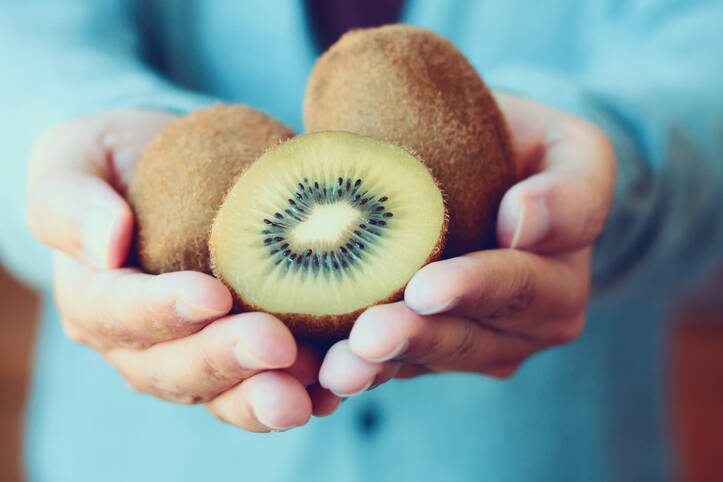Kiwi is a fruit full of medicinal substances. Where can it be grown?

The kiwi is an inconspicuous fruit, but it contains large amounts of antioxidants, or phytonutrients, which help fight cancer or heart disease.
Characteristics
It has a brown skin with hairs and inside is a green treasure. The green flesh in the middle hides a white core, but also small, black and edible seeds. It is recommended not to peel the kiwi, just cut it in half and eat it with a spoon. However, some people prefer to peel and slice the kiwi, while others eat it whole with the skin on.
At first, people associated it with gooseberries after tasting it, but it has nothing to do with gooseberries. In the past, the kiwi was even popularly called the Chinese gooseberry.
Interestingly, the kiwi has the same name as the New Zealand kiwi bird. This is said to be because they have the same appearance. It was officially given its name in 1974.
Because of its resilience, the kiwi made the list of foods least contaminated with pesticides for 2003.
It contains an abundance of vitamin C. One piece contains a full day's worth for an adult. Other vitamins in kiwi include A, B1, B2, E, and K. It also contains minerals such as calcium, phosphorus, magnesium, iron, potassium, and from the carotenoid group, lutein and zeaxanthin. Kiwi also has plenty of zinc, which is beneficial for the quality of hair, nails, skin, and teeth.
Thanks to iron, copper and vitamin C, it promotes the production of red blood cells, which is an excellent helper for anemia. Overall, the combination of health benefits boosts immunity and its regular consumption is beneficial for people with any infectious disease.
Internal use
- Thanks to the antioxidants it contains, it helps, for example, with cancer.
- It strengthens immunity.
- For asthmatics, it helps reduce the frequency and severity of attacks.
- Increases resistance to respiratory infections.
- Helps with digestion and cleanses the intestines.
- Supports heart function, regulates blood pressure and strengthens blood vessels.
- Strengthens bones and muscles, their health and strength.
- Helps against periodontal disease.
- Promotes collagen production, thus aiding skin regeneration.
- It also helps psychologically:
- Increases concentration.
- Reduces stress.
- Fights fatigue.
- It has a positive effect on pregnant women - it helps the development of the fetus and keeps it healthy.
Harvesting and storage
Did you know that the fruit comes from the Actinidia chinensis plant?
In temperate climates, it flowers in May to June. It can be affected by spring frosts and should be protected from them. Fruits usually appear in September to December.
Growers have revealed that the fruit can last on the bush for several weeks after ripening, but it is a good idea to harvest it early as it loses its flavour and vitamin C over time.
Kiwi in pregnancy
As we have mentioned above, kiwi is more than recommended in pregnancy. It is full of vitamins and antioxidants. It benefits not only the mother but also the baby. It also contains folic acid, which benefits the proper development of the baby's organs. Overall, it strengthens the immunity of both mom and baby.
When consumed regularly, it minimizes the risk of blood clots.
However, it is necessary to be careful about allergies. In case you are allergic to papaya, pineapple or bananas, you are very likely to be allergic to kiwi as well.
Allergies are manifested by tingling or tingling of the tongue and mouth, itching and pain in the throat and mouth. However, these reactions are only temporary. Allergic reactions in some people are caused by the enzyme actinidin.
Use in the kitchen
Kiwifruit can be prepared in various combinations. For those who like a fit breakfast, it can be used to enrich a fruit salad or plain cereal. For those who enjoy a smoothie, it can be blended with green foods. Alternatively, it can be used with banana, mango, apple or coconut milk.
Skilled bakers can use their imagination and bake a cake or dessert with kiwi, or just use it to decorate a dessert. Pancake lovers will also enjoy it and it goes well with other fruits.
Extreme gourmets can also use kiwis to make jam.
Its taste makes it a great combination and its exceptional colour makes it a refreshing addition to any dish.










